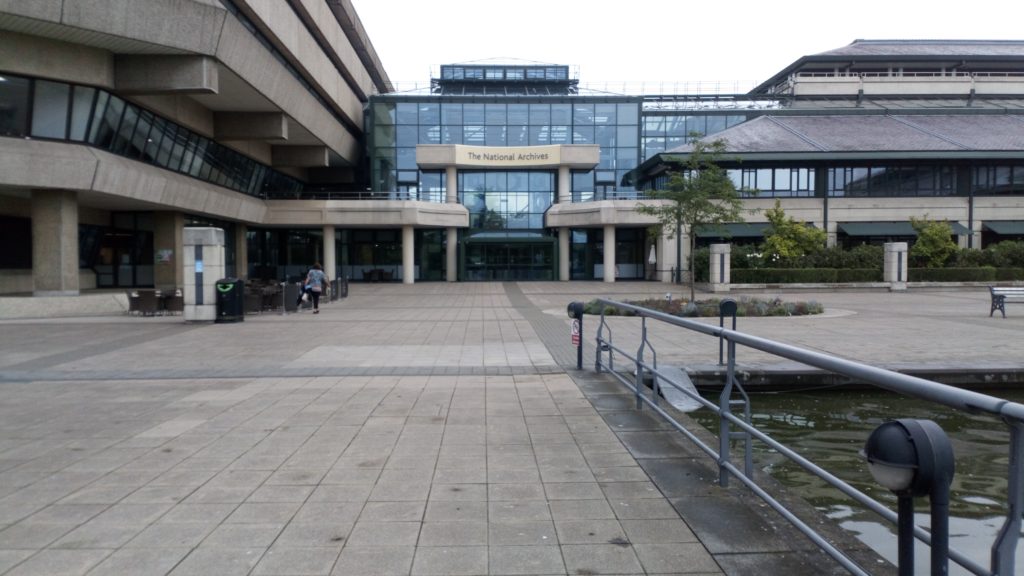Perhaps unexpectedly, I did not start my research by visiting Tanzania. In August 2019, I went to the United Kingdom first.[1] As Tanzania used to be a British colony, many of the records from colonial times can be found in London and surroundings. With this visit, I aimed to find out more about the history of the region which my research focuses on, which was called “Lindi Province” and later on “Southern Province” in colonial times. I will discuss this region in a different post. Here, I elaborate on the second aim of my visit to the UK: learning more about the trade in second-hand clothes, specifically to and in East Africa. I visited several archives which keep papers of British charitable organizations that were involved in the donation of and trade in second-hand clothing since WWII.
The archives in the UK usually have digitized archival catalogues, which makes it relatively easy to search their collection. Nevertheless, my research sometimes felt like looking for a nail in a hay stack. I found that the information on the second-hand clothing trade is very fragmented. Eventually, by piecing together data that I found in several archives, I was able to find evidence of a long history of second-hand clothing imports into East Africa.

I first of all visited the UK National Archives, where I found quite some information on Lindi and Mtwara. But the records of the Colonial Office held here also contain an early reference to the SHC-trade in East Africa. Already in 1930, there was a discussion among colonial officials about the desirability of prohibiting the importation of SHC for reasons of hygiene. The government of the Tanganyika Territory (the name of mainland Tanzania at the time) was not in favour of such a prohibition as the trade was simply too profitable.[2]
I found further evidence of the trade in second-clothing in the Annual Reports of the Tanganyika Territory, most of which can be accessed in the library of SOAS at the University of London. The Annual Report of 1947 for instance mentioned second-hand clothing and apparel for sale as a separate category for import duties. The duties levied amounted to thirty percent of the goods’ value, more than the twenty percent for new pieces of clothing.
At the SOAS library, I could furthermore access digital copies of the Tanganyikan Gazette, which published government announcements. A Gazette Notice with a list of uncleared goods at the Customs Warehouse at the port of Dar es Salaam contained for instance one case of second-hand clothes which carried the description: “lovegifts for distribution among needy Africans”.[3] This shows that second-hand clothes by the 1960s were not only traded in East Africa but were also donated from western countries. Whereas this case of clothing seems to be an individual donation, many of these donations were coordinated by emergency relief organizations that had gained experience with distributing food, clothes and other goods among refugees in post-WWII Europe and that later expanded their activities to other regions of the world. I found proof for the distribution of second-hand clothing as a form of aid also specifically for the region of Tanzania that I focus on. The archives of the aid organization Oxfam are kept in the Special Collections of the Weston Library, part of the Bodleian Libraries in Oxford. These archives contain several documents on refugees from Mozambique in Lindi and Mtwara regions in the 1980s. One of these documents described explicitly that these refugees were given second-hand clothes (in exchange for labour).[4] These files from different archives together thus document the long presence of used clothing in Tanzania, both as a valuable good for trade and as a form of aid.
Despite the painstaking work of going
through records, I enjoy archival research very much, as one can come across
small but crucial bits of information in the most unexpected places. I
similarly enjoy the work afterwards: going through the data and finding out how
it can contribute to my knowledge on the SHC-trade. The analysis of the data I
found in the UK is still in its early stages. Indeed, I still have some more
archival research ahead of me, this time in Tanzania. These visits will surely
provide food for another blog post.
[1] This visit was made possible by a travel grant from the Global South Studies Centre, the research centre at which I am based.
[2] The National Archives of the UK, CO 533/404/9: “Second-hand clothing: Importation prohibited.”
[3] Tanganyika Gazette, Notice No. 1774, August 2, 1963.
[4] Oxfam Archive, Oxford, Bodleian Library, MS. Oxfam PRF TAN 297: “Lindi Regional Development Director, Lindi, Tanzania: Survey of displaced and indigenous people to identify their support requirements, 1987-1989.”
Thanks for the information and very useful 🙂